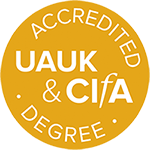Current filters applied:
- (-) Remove Europe filter Europe
- (-) Remove Current Projects filter Current Projects
- (-) Remove Material Culture filter Material Culture
- (-) Remove Science, Technology and Innovation filter Science, Technology and Innovation
Displaying 4 projects
At the intersection among the arts, science, and technology, printing is widely recognised as the invention of the millennium. However, and in spite of a resurgence of traditional typographic methods among artists and craftspeople, letterpress equipment and technology face an uncertain future...
The aim of the ERC project Beasts to Craft (B2C) is to document the biological and craft records in parchment in order to reveal the entangled histories of improvement and parchment production in Europe from 500-1900 AD.
In Western Europe the main use for artificial monuments out of stone, wood or earthy materials extends from the Late Neolithic to Early Bronze Age (4th and 3rd millennium BCE). This unique period of landscape adaptation has a lasting, visible imprint on the present. However, as monuments are by...
How did the biomechanics and ergonomics of the human hand influence the use and production of Palaeolithic stone tools? Traditionally, stone tools have been analyzed for their morphological properties and technological characteristics to infer the cognitive and social evolution of early hominins...


